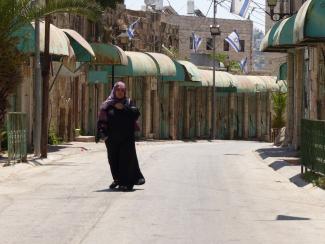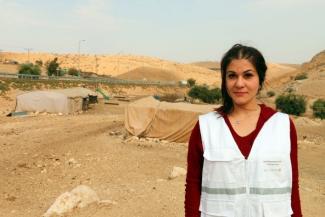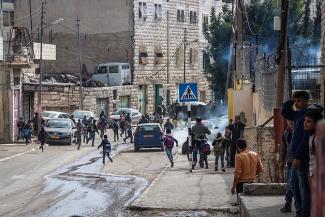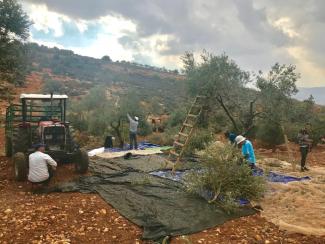The new year has witnessed increased tension in the occupied Palestinian territory (oPt), particularly in Gaza. The most serious escalation occurred on 23 and 24 February, following the killing, by Israel, of a member of Palestinian Islamic Jihad (PIJ), who was attempting to place an explosive device along the perimeter fence with Israel; in an incident caught on camera, his body was subsequently retrieved by an Israeli bulldozer, in a manner that triggered widespread outrage across the Gaza Strip.
The Humanitarian Bulletin | January-February 2020
In this document
This dusty tent in a remote part of the northern Jordan Valley is normally home to 11 women and girls from the Daragmeh family in Al Maleh herding community in Tubas governorate. But for the past 14 years, for two days a week, it has also periodically functioned as a health clinic, providing primary healthcare to some of the region’s most vulnerable people.
In September 2018, following an attack by Israeli settlers, Suhad and Ahmad concluded that their family could no longer stay in Tel Rumeida, located in the Israeli-controlled area of Hebron city (H2). Suhad and their three children left for another part of the city, while Ahmad has continued living in the same home, from where he runs his business. “Buying a new apartment was a huge economic effort, but I had to think of the welfare of my children.”.
Akkaba, (population 345), is a village in the Tulkarm governorate in the northern West Bank. About 88 per cent of the community’s 2,200 dunums of land is located in the closed area between the Barrier and the Green Line, the “Seam Zone”. In 2002, following a wave of Palestinian attacks, including suicide bombings, Israel began building the Barrier with the stated aim of preventing these attacks. The vast majority of the Barrier’s route is located within the West Bank, isolating Palestinian communities and farming land, and contributing to the fragmentation of the occupied Palestinian territory (oPt).













